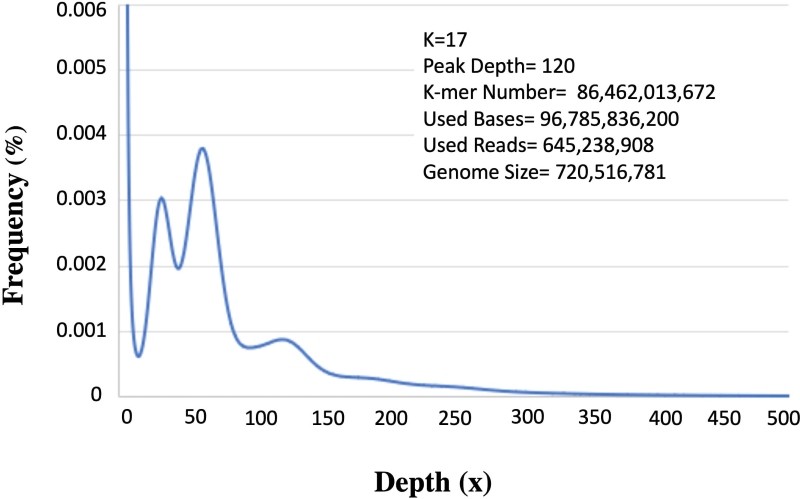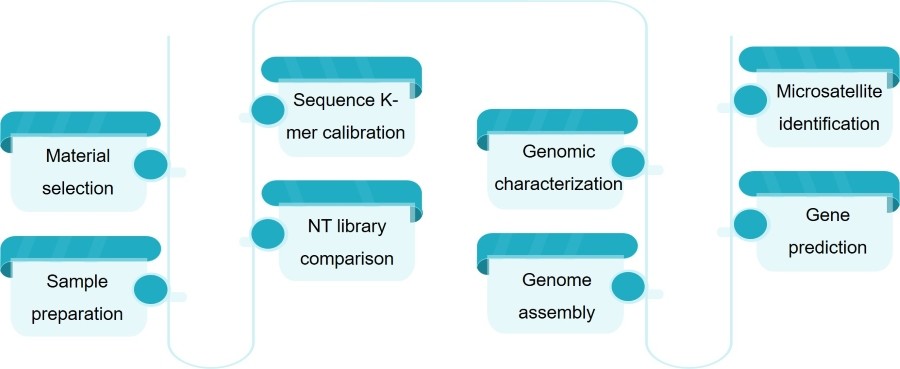Genome Survey Sequencing of Tissue-Cultured Plants
Genome survey sequencing is based on second-generation sequencing data to assess the size, heterozygosity, and proportion of repetitive sequences in the genomes of study species. The genome is also preliminarily assembled and subjected to sequence analysis, such as microsatellite identification and gene prediction. Lifeasible provides you with a tissue culture plant genome survey service, which is based on the low-depth sequencing data of small fragment libraries, and through K-mer analysis, we can effectively assess the genome size, GC content, heterozygosity, repetitive sequence content, and other information. It can help you understand the genome characteristics of a tissue culture plant and provide data support for the subsequent development of whole genome de novo sequencing and assembly strategies.
What is a Genome Survey?
The heterozygosity and repetitive sequences of a genome have a great impact on the subsequent genome assembly. Highly heterozygous genomes are often unable to merge sister chromosomes, leading to a large assembly result. The repeated sequences will be folded in the assembly, making gaps and errors in the assembly, leading to a small assembly result. The heterozygosity and repetitive sequence content vary greatly between the genomes of different organisms, so it is often necessary to investigate the characteristics of the genome before genome sequencing and genome surveys are born. Genome survey refers to the investigation of genome size and complexity, which refers to the total amount of DNA contained in the nucleus of a haploid cell.
 Figure 1. K-mer analysis for genome size prediction of Acacia pachyceras. (Habibi, N., et al, 2023)
Figure 1. K-mer analysis for genome size prediction of Acacia pachyceras. (Habibi, N., et al, 2023)
K-mer distribution frequency analysis is currently the most commonly used genome survey method. The species is first sequenced in the second generation, and based on the sequencing data, the genome size, heterozygosity, proportion of repetitive sequences, and other characteristics of the species are obtained by K-mer correlation analysis.
What We Offer
Our analysis of the survey data includes quality control of the raw second-generation sequencing data, detection of the presence of contamination in the data, K-mer analysis, and genomic characterization assessment. After completing the data analysis, the survey data analysis graph will be obtained.
Standard analysis
- Genome size assessment
- Heterozygosity assessment
- Repetition rate assessment
- Preliminary assembly
- GC content assessment
Technology route

Sample Requirements
| Sample type |
Sample concentration |
Total sample volume |
Second-generation sequencing depth |
| DNA |
≥10 ng/μL |
≥5 μg |
≥50 × |
| Plant tissue |
- |
≥5 g |
Advantages
- Excellent methodology, short cycle time, and high accuracy.
- Scientific program design.
- Comprehensive analysis.
- High-quality sequencing data.
- Excellence in every aspect of the project.
Please feel free to contact us for more information about the genome survey sequencing of tissue-cultured plants.
Reference
-
Habibi, N., et al. (2023). “Genome survey and genetic characterization of Acacia pachyceras O. Schwartz. " Frontiers in Plant Science 14, 2023.
You want to sign a confidentiality agreement.
You have a specific plant species for your experimental needs.
You have a reliable and relevant cooperation project to discuss.
You are very interested in our project or have any questions.
You need an updated and detailed quotation.
For research or industrial use.

 Figure 1. K-mer analysis for genome size prediction of Acacia pachyceras. (Habibi, N., et al, 2023)
Figure 1. K-mer analysis for genome size prediction of Acacia pachyceras. (Habibi, N., et al, 2023)

